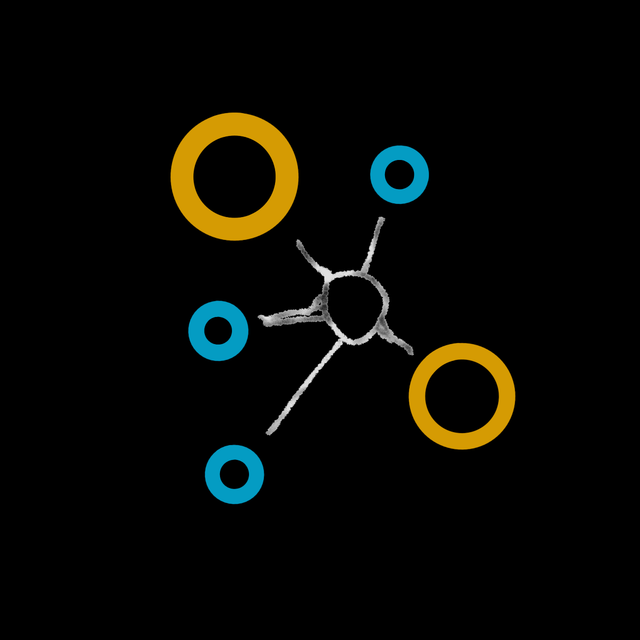ANALISIS PREDIKSI TINGKAT KELULUSAN MAHASISWA UNIVERSITAS WIRALODRA INDRAMAYU MENGGUNAKAN METODE FUZZY TSUKAMOTO
##plugins.themes.academic_pro.article.main##
Abstract
Universitas Wiralodra merupakan Universitas swasta pertama di Indramayu, terletak di Kota Indramayu, Jawa Barat. Seiring dengan perjalanannya, Universitas Wiralodra terus berbenah untuk meningkatkan kapasitasnya, melalui peningkatan kualitas Sumber Daya Manusia (SDM) Dosen, Manajemen, kegiatan mahasiswa, penelitian dan publikasi, serta perbaikan sarana dan prasarana kampus. Kelulusan merupakan suatu hal yang dapat diharapkan oleh setiap mahasiswa, yang nantinya akan menjadi bekal seseorang mahasiswa dalam menempuh jenjang selanjutnya. Permasalahannya apakah mahasiswa Universitas Wiralodra bisa lulus dengan maksimal atau tidak. Dalam penelitian lebih memfokuskan bagaimana implementasi teori logika fuzzy dalam memprediksi tingkat kelulusan mahasiswa Universitas Wiralodra. Teori logika fuzzy ini digunakan karena mudah untuk dimengerti. Pada Penelitian ini menggunakan teori fuzzy tsukamoto dengan 2 variabel input yang terdiri dari jumlah penerimaan wisuda dan jumlah mahasiswa yang akan menhasilkan status jumlah mahasiswa yang lulus. Tujuan dari penelitian ini yaitu untuk memprediksi jumlah mahasiswa yang lulus dalam setiap tahunnya di Universitas Wiralodra Indramayu. Pada penelitian selanjutnya agar keputusan dalam menganalisis kondisi tingkat kelulusan mahasiswa agar digabungkan metode fuzzy tsukamoto dan markov chain agar masalah yang terjadi dalam memprediksi tingkat kelulusan mahasiswa dapat lebih akurat.
##plugins.themes.academic_pro.article.details##

This work is licensed under a Creative Commons Attribution-NoDerivatives 4.0 International License.
References
- F. Camastra et al., “A fuzzy decision system for genetically modified plant environmental risk assessment using Mamdani inference,” Expert Systems with Applications, vol. 42, no. 3, pp. 1710–1716, 2015, doi: 10.1016/j.eswa.2014.09.041.
- J. O. Oladipo, A. S. Akinwumiju, O. S. Aboyeji, and A. A. Adelodun, “Comparison between fuzzy logic and water quality index methods: A case of water quality assessment in Ikare community, Southwestern Nigeria,” Environmental Challenges, vol. 3, no. January, p. 100038, 2021, doi: 10.1016/j.envc.2021.100038.
- F. Topalo?lu and H. Pehlivan, “Comparison of Mamdani type and Sugeno type fuzzy inference systems in wind power plant installations,” 6th International Symposium on Digital Forensic and Security, ISDFS 2018 - Proceeding, vol. 2018–Janua, pp. 1–4, 2018, doi: 10.1109/ISDFS.2018.8355384.
- B. R. Raghunath and B. Annappa, “Dynamic Resource Allocation Using Fuzzy Prediction System,” in 2018 3rd International Conference for Convergence in Technology (I2CT), Apr. 2018, pp. 1–6, doi: 10.1109/I2CT.2018.8529674.
- J. Singla, “Comparative study of Mamdani-type and Sugeno-type fuzzy inference systems for diagnosis of diabetes,” Conference Proceeding - 2015 International Conference on Advances in Computer Engineering and Applications, ICACEA 2015, pp. 517–522, 2015, doi: 10.1109/ICACEA.2015.7164799.
- A. Son and E.-N. Huh, “Study on a migration scheme by fuzzy-logic-based learning and decision approach for QoS in cloud computing,” in 2017 Ninth International Conference on Ubiquitous and Future Networks (ICUFN), Jul. 2017, pp. 507–512, doi: 10.1109/ICUFN.2017.7993836.
- G. Casalino, G. Castellano, and C. Mencar, “Incremental and Adaptive Fuzzy Clustering for Virtual Learning Environments Data Analysis,” in 2019 23rd International Conference Information Visualisation (IV), Jul. 2019, vol. 2019–July, no. Iv, pp. 382–387, doi: 10.1109/IV.2019.00071.
- H. Thakkar, V. Shah, H. Yagnik, and M. Shah, “Comparative anatomization of data mining and fuzzy logic techniques used in diabetes prognosis,” Clinical eHealth, vol. 4, pp. 12–23, 2021, doi: 10.1016/j.ceh.2020.11.001.
- F. B. Goularte, S. M. Nassar, R. Fileto, and H. Saggion, “A text summarization method based on fuzzy rules and applicable to automated assessment,” Expert Systems with Applications, vol. 115, pp. 264–275, 2019, doi: 10.1016/j.eswa.2018.07.047.
- K. Mittal, A. Jain, K. S. Vaisla, O. Castillo, and J. Kacprzyk, “A comprehensive review on type 2 fuzzy logic applications: Past, present and future,” Engineering Applications of Artificial Intelligence, vol. 95, no. December 2018, p. 103916, Oct. 2020, doi: 10.1016/j.engappai.2020.103916.
- Weihua Huang, Zhong Ma, Xinfa Dai, Yi Gao, Mingdi Xu, and Huafeng Wu, “Load balancing algorithm for virtual cluster using fuzzy clustering,” in 2016 2nd IEEE International Conference on Computer and Communications (ICCC), Oct. 2016, pp. 313–320, doi: 10.1109/CompComm.2016.7924715.
- M. Dandi and T. Hidayat, “Analisis Prediksi Problem Virtual Machine Server Menggunakan Metode Fuzzy Logic,” vol. 3, no. 1, pp. 1–6, 2020.
- T. Hidayat and M. Alaydrus, “Performance Analysis and Mitigation of Virtual Machine Server by using Naive Bayes Classification,” in 2019 Fourth International Conference on Informatics and Computing (ICIC), Oct. 2019, pp. 1–5, doi: 10.1109/ICIC47613.2019.8985932.
- B. M. P. Moura, G. B. Schneider, A. C. Yamin, M. L. Pilla, and R. H. S. Reiser, “Allocating Virtual Machines exploring Type-2 Fuzzy Logic and Admissible Orders,” in 2019 IEEE International Conference on Fuzzy Systems (FUZZ-IEEE), Jun. 2019, vol. 2019–June, pp. 1–6, doi: 10.1109/FUZZ-IEEE.2019.8858827.
- M. H. Eghbal Ahmadi, S. J. Royaee, S. Tayyebi, and R. Bozorgmehry Boozarjomehry, “A new insight into implementing Mamdani fuzzy inference system for dynamic process modeling: Application on flash separator fuzzy dynamic modeling,” Engineering Applications of Artificial Intelligence, vol. 90, no. March 2019, p. 103485, 2020, doi: 10.1016/j.engappai.2020.103485.
- K. Belarbi, F. Titel, W. Bourebia, and K. Benmahammed, “Design of Mamdani fuzzy logic controllers with rule base minimisation using genetic algorithm,” Engineering Applications of Artificial Intelligence, vol. 18, no. 7, pp. 875–880, 2005, doi: 10.1016/j.engappai.2005.03.003.
- M. F. Adak, “Software defect detection by using data mining based fuzzy logic,” in 2018 Sixth International Conference on Digital Information, Networking, and Wireless Communications (DINWC), Apr. 2018, pp. 65–69, doi: 10.1109/DINWC.2018.8356997.
- S. Suthar, R. Verma, S. Deep, and K. Kumar, “Optimization of conditions (pH and temperature) for Lemna gibba production using fuzzy model coupled with Mamdani’s method,” Ecological Engineering, vol. 83, pp. 452–455, 2015, doi: 10.1016/j.ecoleng.2015.07.006.
- N. Mijovi?, M. Kali?, and J. Kuljanin, “Tuning the fuzzy logic system by two meta-heuristics: case study of airline market share on long-haul routes,” Transportation Research Procedia, vol. 52, no. 2020, pp. 453–460, 2021, doi: 10.1016/j.trpro.2021.01.053.
- F. Ramezani and M. Naderpour, “A fuzzy virtual machine workload prediction method for cloud environments,” in 2017 IEEE International Conference on Fuzzy Systems (FUZZ-IEEE), Jul. 2017, pp. 1–6, doi: 10.1109/FUZZ-IEEE.2017.8015450.
- N. Ghamry and L. S. Nasrat, “Fuzzy logic approach for the prediction of the lifetime of epoxy insulators,” in 2015 12th International Conference on Fuzzy Systems and Knowledge Discovery (FSKD), Aug. 2015, pp. 426–432, doi: 10.1109/FSKD.2015.7381980.
Most read articles by the same author(s)
- Taufik Hidayat, Dewi Yunita Sari, Yasep Azzery, ANALISA PREDIKSI PERTUMBUHAN START-UP DI ERA INDUSTRI 4.0 MENGGUNAKAN METODE MARKOV CHAIN , TEKNOKOM: Vol. 3 No. 2 (2020): TEKNOKOM
- Taufik Hidayat, ENCRYPTION SECURITY SHARING DATA CLOUD COMPUTING BY USING AES ALGORITHM: A SYSTEMATIC REVIEW , TEKNOKOM: Vol. 2 No. 2 (2019): TEKNOKOM
- Luthfia Sodikin, Taufik Hidayat, ANALISA KEAMANAN E-COMMERCE MENGGUNAKAN METODE AES ALGORITMA , TEKNOKOM: Vol. 3 No. 2 (2020): TEKNOKOM
- Indra Surya Permana, Taufik Hidayat, Rahutomo Mahardiko, RAW DATA SECURITY BY USING ELGAMAL AND SHA 256 PUBLIC KEY ALGORITHM , TEKNOKOM: Vol. 4 No. 1 (2021): TEKNOKOM
- Yasep Azzery, Nur Dwi Mulyanto, Taufik Hidayat, MEMORY FORENSIC DEVELOPMENT AND CHALLENGES IN IDENTIFYING DIGITAL CRIME : A REVIEW , TEKNOKOM: Vol. 5 No. 1 (2022): TEKNOKOM
- Mohamad Adnan Fauzi, Rahmat Hidayat, Taufik Hidayat, STORAGE ROOM TEMPERATURE AND HUMIDITY MONITORING IOT- BASED MEDICINE , TEKNOKOM: Vol. 6 No. 2 (2023): TEKNOKOM
- Ismail Ismail, Taufik Hidayat, TANTANGAN EKONOMI DIGITAL UNTUK PARIWISATA INDONESIA MENGGUNAKAN METODE FORECASTING , TEKNOKOM: Vol. 2 No. 2 (2019): TEKNOKOM
- Indra Surya Permana, Taufik Hidayat, Rahutomo Mahardiko, MOBILE SCANNER ADOPTION ANALYSIS BETWEEN EMPLOYMENT AND EDUCATIONAL BACKGROUND – AN ANALYSIS OF LOGISTIC REGRESSION , TEKNOKOM: Vol. 4 No. 2 (2021): TEKNOKOM
- Muhamad Dandi, Taufik Hidayat, ANALISIS PREDIKSI PROBLEM VIRTUAL MACHINE SERVER MENGGUNAKAN METODE FUZZY LOGIC , TEKNOKOM: Vol. 3 No. 1 (2020): TEKNOKOM
- Muhamad Dandi, Kinky Fernando, Taufik Hidayat, STUDI KASUS SISTEM PENCARIAN DATA PENDUDUK MENGGUNAKAN METODE STUDY PRACTICE , TEKNOKOM: Vol. 3 No. 1 (2020): TEKNOKOM


 https://ijeeemi.poltekkesdepkes-sby.ac.id/pages/pulsayuk/
https://ijeeemi.poltekkesdepkes-sby.ac.id/pages/pulsayuk/
